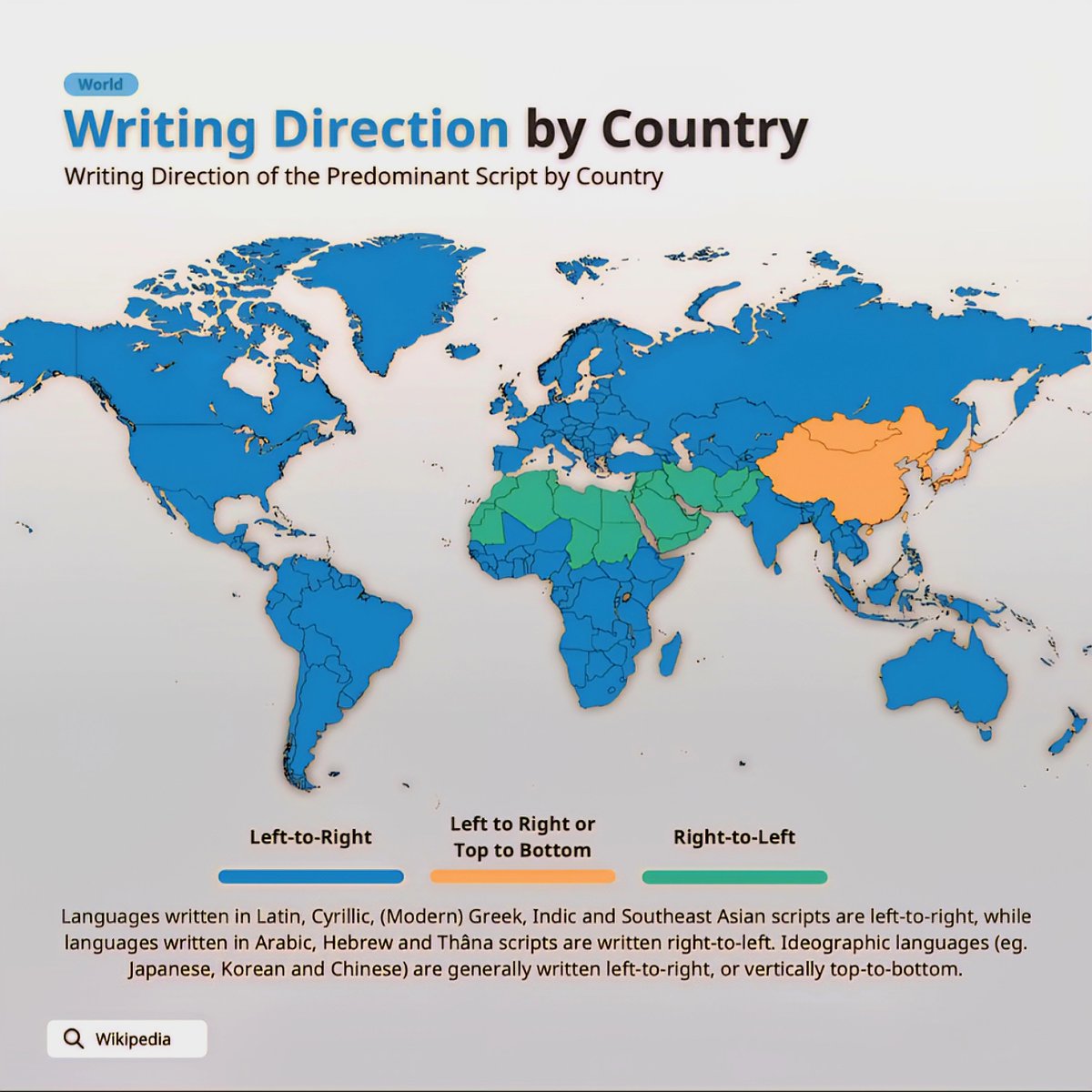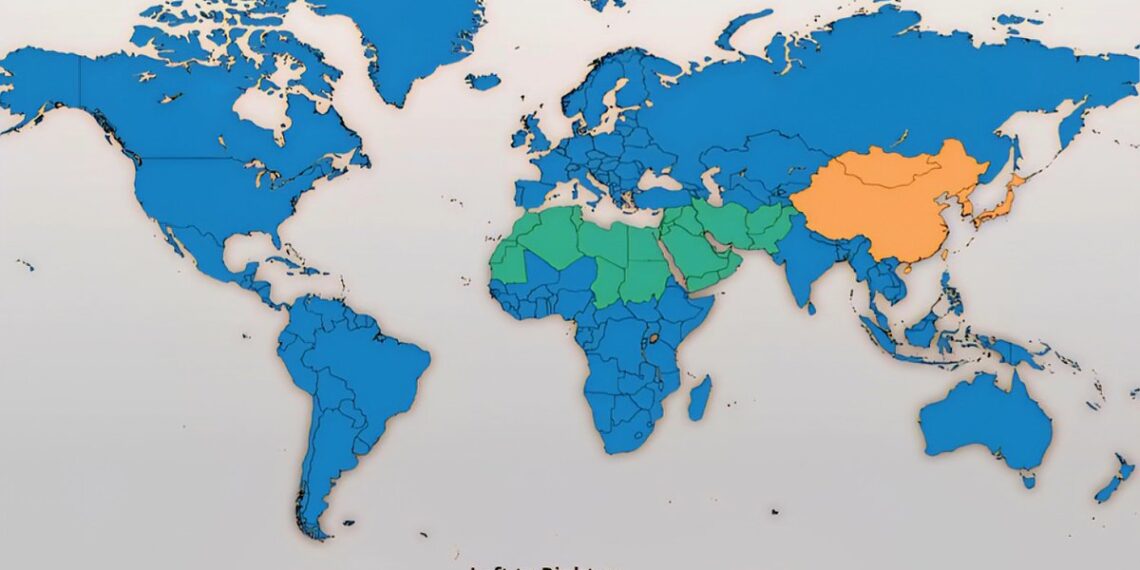Select Language:
Understanding the Global Patterns of Writing Direction
1. The Dominance of Left-to-Right Languages
Most countries using Latin, Cyrillic, and Greek alphabets write from left to right. This includes nations like the United States, Canada, Russia, Greece, and much of Europe. This writing orientation has become the standard in global communication, technology, and educational systems. The reason behind this widespread pattern traces back to the development of writing tools—like quills and pens—which facilitated left-to-right writing, and the influence of Western literature and media.
2. Right-to-Left Script Countries
Several languages, particularly Arabic, Hebrew, and Persian (Farsi), follow a right-to-left writing direction. These languages are primarily used in the Middle East, North Africa, and parts of Central Asia. For instance, countries such as Saudi Arabia, Israel, and Iran adhere to this script orientation. Interestingly, this directionality influences the overall design of the language’s script, calligraphy, and even the user interface of digital devices used in these regions, often requiring specialized adjustments.
3. Vertical Writing Traditions in East Asia
Historically, East Asian countries like China, Japan, and Korea employed vertical writing from top to bottom, with columns progressing from right to left. This tradition was deeply embedded in calligraphy, official documents, and classical literature. Today, contemporary usage mostly favors horizontal, left-to-right writing, especially in Japan and Korea, aligning with global standards. However, in some contexts—such as traditional Chinese calligraphy or certain Japanese publications—vertical writing remains prominent.
4. The Unusual Case of Mongolian Script and Its Direction
Mongolian script writes vertically from top to bottom, and traditional practice involves columns progressing from left to right. This unique orientation cleverly combines vertical writing with left-to-right column flow, differing from other scripts in the region. Despite the Latin alphabet being widely adopted, the traditional writing style still persists in certain contexts and cultural expressions, reflecting Mongolia’s rich linguistic heritage.
5. Indigenous and Regional Variations
Many indigenous and regional languages showcase diverse writing directions, often influenced by cultural practices. For example:
- In South Asia, scripts like Devanagari (used for Hindi, Nepali, and others) are written from left to right horizontally.
- In Southeast Asia, scripts such as Thai and Burmese are predominantly written from left to right, with some traditional practices favoring vertical styles in specific contexts.
- In the Americas, indigenous scripts exhibit a wide array of orientations, often adapted to the available writing mediums.
6. Technological Impact on Writing Direction
In the modern digital age, the standardization of left-to-right writing in most languages simplifies software development and user interface design. Conversely, right-to-left languages require specialized support—such as bidirectional text handling and mirrored layouts. Additionally, some digital tools and platforms now support vertical writing options, primarily for artistic or cultural expressions, further diversifying the global writing landscape.
7. Cultural Preservation and Modern Adaptations
Many cultures actively preserve traditional writing directions through educational programs, calligraphy, and cultural festivals. For example, Japanese calligraphy often adheres to vertical writing, echoing centuries-old practices. Similarly, Arabic calligraphy displays a vertical and decorative style in religious and artistic contexts. Despite globalization enforcing standardization, local communities continue to celebrate their unique linguistic identities through traditional writing orientations.

Image Source: Twitter
8. The Future of Writing Directions
As technology advances, the boundaries of traditional writing directions are becoming more flexible. Screen-based content can easily switch between orientations, reflecting personal preferences or cultural contexts. This flexibility fosters greater inclusivity, allowing diverse scripts and traditions to coexist and evolve. Additionally, emerging AI and font technologies support complex bidirectional and vertical text arrangements, promising a more integrated global writing system in the years ahead.
9. Summary: A World of Diverse Writing Systems
The world’s writing systems are as varied as its cultures, with significant patterns that have evolved over centuries. While left-to-right dominates globally, significant regions maintain right-to-left and vertical scripts, each embodying unique histories and cultural identities. As we move into 2025, the integration of traditional practices with modern technology ensures that the diversity of writing directions continues to thrive, enriching global communication and cultural preservation.






